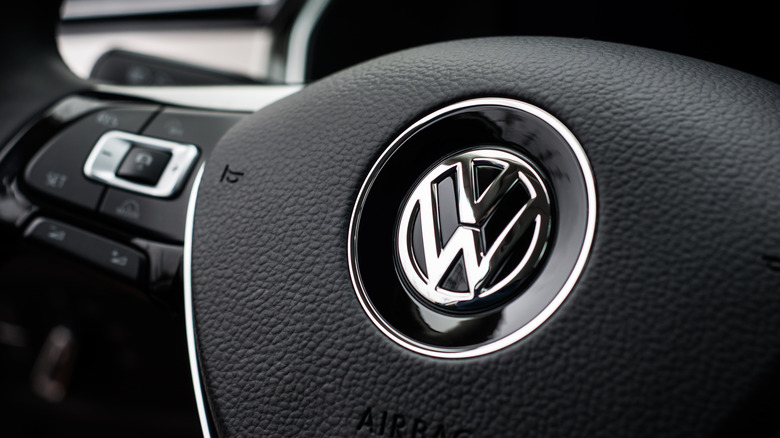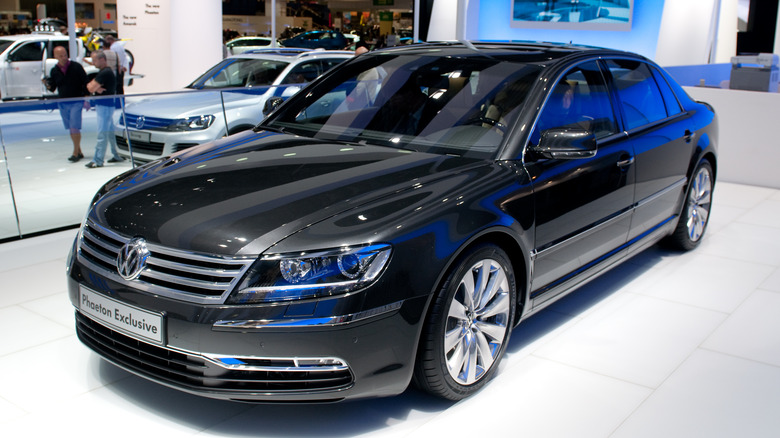The Reason Why Volkswagen Discontinued Its Most Luxurious Car
To gearheads, a phaeton is an open-body car style usually found on four-door vehicles popular up until about World War II. Its most desirable feature was that it looked like a car meant to be driven around by a chauffeur, giving off the distinct aura of being rich and famous. But without any fixed weather protection, at higher speeds, the rear occupants were usually battered about by the wind instead of being pampered in the cushiony lap of luxury.
Greek mythology students know Phaethon as the progeny of the sun god Helios and the water nymph Clymene. According to Greeka, Phaethon's chum once teased him that his father wasn't the sun god. Both of his parents, though, confirmed that Helios really was a god, and to prove that he was, Helios promised to give his son whatever he asked. So, Phaethon asked to drive his dad's god-fueled chariot around for the day. You must know where this is headed, right?
Phaethon took the reigns and revved the horses but couldn't keep the chariot under the cosmic speed limit. During his celestial drive-by of Earth, he got too close and grazed it, causing widespread damage. Before he could do any more harm, though, Zeus tossed a thunderbolt at Phaethon and sent him plummeting to his doom.
It's ironic — and possibly not all that shocking — that when Volkswagen stamped a name associated with a Greek tragedy and car style known for questionable design flaws onto one of its vehicles, nothing good would come of it.
The Phaeton simply wasn't worth the price of admission
Volkswagen made the Phaeton, a "rich people's car," from 2002 to 2016, but it was only offered in the United States between 2004 and 2006. Built by hand in their Dresden factory, the car was sold in a stripped-down standard model for an outrageous base price of $100,000.
The U.S. version came with two powerful engine options: a 4.2-liter V8 with 335 horsepower or an even bigger 6.0-liter W12 with 420 horsepower. While both could run at a top speed of 186 mph, they were oddly maxed out at 130 mph (via Motor Trend). Maybe VW was aware of the Greek Phaethon's inability to keep his chariot under control and didn't want its occupants meeting the same fate.
The interior was comfortable, with fully adjustable leather seats, but it wasn't overly opulent. Motor Trend compared it to "a well-fed Passat," which cost less than half the Phaeton's asking price. But it was replete with a litany of terrible design flaws, parts choices, and electrical issues: rear tire-pressure sensors that didn't work, a trunk that wouldn't open properly, a navigation system that would randomly tell you to turn right, and stereo and climate controls that would turn on and off arbitrarily. Additionally, the Phaeton's front windshield glass gave its occupants a distorted view of the world (via Motor Trend).
VW's luxury flagship sales were never great (via Deutsche Welle). The company only sold 4,061 in 2014. (And its best year, 2011, was still only 11,166 Phaetons sold.) So, Volkswagen ceased production in March 2016. As it turned out, not many "wealthy people" actually wanted to spend six figures on a boring-looking sedan with a bunch of mechanical issues.

